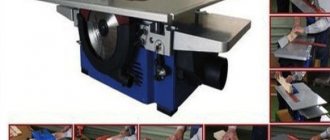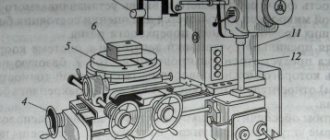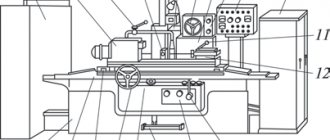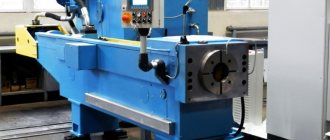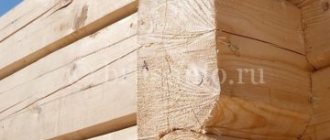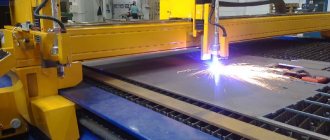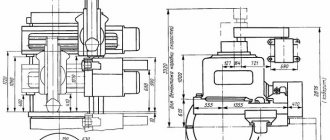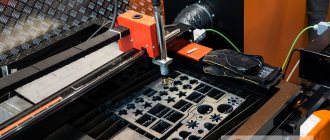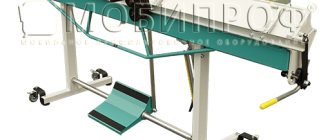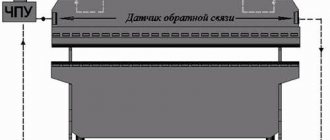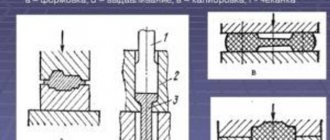03.08.2020 Author: VT-METALL
Issues discussed in the material:
- Purpose of rotary lathes
- Advantages of using a rotary lathe in production
- The device of a rotary lathe
- Main types of rotary lathes
- General principle of operation of rotary-turning machines
- Vertical lathe selection parameters
Rotary lathes are used for processing massive parts. Such operations are among the most challenging tasks in the manufacturing process. The main difficulty of turning large workpieces is the complexity of their installation on special equipment, as well as control of processing. The rotary machine is designed to solve this problem.
The main design feature of such machines, which determined their inclusion in a separate category, is the vertical location of the spindle rotation axis. Today, these devices have almost completely replaced outdated models of frontal vehicles. Read more about the purpose of this type of industrial equipment, types of machines and selection parameters.
Purpose of rotary lathes
Manufacturers offer various modifications of this equipment, each of which performs a specific set of operations. Universal types of rotary lathes are gaining increasing popularity.
The metal processing operations performed on such devices are listed below:
- turning - the internal and external parts of the parts are processed;
- groove - creating grooves;
- drilling - working with holes;
- turning - finishing flat surfaces;
- deployment, as well as countersinking;
- production of shaped surfaces;
- creating threads with taps or cutters;
- cutting from workpieces - parts and parts having a conical (cylindrical) shape.
Advantages of rotary machines with numerical control:
A distinctive feature of the design makes it possible to perform processing in difficult conditions at high speeds, achieving the required accuracy;
They have a wide range of capabilities for processing large dimensional parts from various fields such as the energy industry, oil and gas industry and transport industry.
From all of the above it follows that choosing the appropriate version of the equipment and buying a rotary machine with numerical control has the ability to produce in different industry areas.
Despite the fact that numerically controlled machines, which have the ability to perform several operations at once in one setup, are now in great demand, rotary lathes remain a required type of equipment in many areas of production. This is due to the fact that these machines differ in that they have a higher speed when processing metal. This is facilitated by the current tool used. Also due to the fact that rotary lathes can be upgraded and installed controllers with numerical control, which efficiently manage a large number of technological operations.
Advantages of using a rotary lathe in production
Let's consider the advantages of rotary lathes:
- Today, high-precision parts are manufactured on rotary machines built into the production line. Moreover, it does not matter whether the unit is equipped with a CNC unit or not. However, the quality of processing on a CNC machine is much higher.
- Modernization of equipment and equipping it with CNC simplifies management. A hydraulic or electric drive is responsible for the spatial orientation of the main parts of the machine. For example, a CNC rotary lathe is controlled by a computer, which processes information provided by the operator.
- An important feature of the machines is that their main movement is rotation, transmitted to the faceplate with the workpiece.
- Most equipment breakdowns can be fixed yourself. Professional repairs are rarely needed and only for certain models. Proper operation and regular maintenance of rotary machines allows you to work on them without causing complex accidents.
Another advantage of the equipment is the operating pattern on a rotary-type lathe, the use of which significantly reduces the likelihood of injury. Thus, the safety of the master when performing various operations on the machine becomes significantly higher.
The device of a rotary lathe
The work table is one of the most important parts of a rotary machine. A faceplate is placed on it to fix the workpiece. The table surface on which the processing process takes place has a horizontal plane. This greatly simplifies the installation of heavy and large workpieces.
There are two types of rotary machines: single-post and double-post. The former are equipped with a faceplate having a diameter of no more than 1,600 mm. They can process parts with a diameter of up to 1,500 mm. Double-column ones allow you to work with larger workpieces, since the faceplate on them can have a diameter of no more than 25,000 mm.
We recommend articles on metalworking
- Steel grades: classification and interpretation
- Aluminum grades and areas of their application
- Defects in metal products: causes and search methods
There are two guides on the vertically located frame. A cross member with two calipers moves along them - a boring one and a revolving one. The latter move along the crossbar, or rather its horizontal guides.
The turret caliper moves vertically and horizontally. It consists of a slider that moves vertically and a longitudinal carriage. The turret head is mounted on the slide. It is the turret support with the cutting tool that allows you to perform such manipulations as drilling, external processing, and trimming the ends of the workpiece.
The boring support consists of a longitudinal carriage. A rotating mechanism with a slider on which the tool holder is mounted is installed on it. A boring caliper with tools makes it possible to cut internal grooves, machine conical parts, and bore holes.
Single column rotary lathes have a side support. It includes a slider, a longitudinal carriage and a tool holder. Its main task is to process workpieces from the outside.
Important! The functionality of rotary-type machines increases significantly with the ability to install different supports. As a result, the workpiece can be processed simultaneously with different types of cutters.
Design and main components
The rotary lathe has a device that is not similar to the design of metalworking equipment from other groups. The features are as follows:
- The main components of a rotary lathe are represented by a work table and a drive.
- Considering the rotary lathe, we note the installation of the faceplate on the table. It is this that determines the operating features of a rotary lathe. The faceplate is used to secure workpieces; it can have a different cross-section and diametrical size.
- Models of rotary lathes often have a horizontal table arrangement. This greatly simplifies the installation of heavy workpieces.
- It should be taken into account that boring machines, rotary lathes or other types, can have either one or two racks. The two-column rotary lathe has become widespread in the case of processing workpieces of large weight and size. This is due to the fact that two pillars allow for increased rigidity of the structure to ensure the best processing conditions.
- As previously noted, thread cutting with rotary machines is only possible with the installation of additional equipment. An operator can modernize a rotary lathe provided that special equipment is available.
- Single-column versions are most often CNC-controlled. In this case, cutting modes for vertical turning machines are entered by the operator. The diameter in this case does not exceed 150 centimeters.
- Options for models with two racks can be used for processing workpieces with a diameter of more than 165 centimeters. Vertical lathe models with two columns also have a feature called a gantry. It is placed between two racks.
- The single stand option allows for machining of conical surfaces. The purpose of rotary lathes involves the presence of a boring support, which has a longitudinal carriage and a rotary unit, a slider and a holder for the selected cutting tool.
- Many rotary lathes have a kinematic design that provides for the transfer of force to a turret support. Such a rotary lathe has an electrical circuit that provides for the installation of several electric motors, each responsible for the movement of a certain organ, for example, a turret caliper. When considering the passport of some rotary lathes, attention is paid to the possibility of installing several cutting tools. The technical characteristics of the turret head of rotary lathes provide for the installation of special holders. The single-column rotary machine has a purpose related to uninterrupted operation due to the installation of only one support and a turret. A single-column and two-column rotary lathe can have a traverse along which the support moves in manual or automatic mode.
- Many single-post models have an additional support located on the side of the post. The additional support has a universal holder, which also holds the tool. A rotary-type lathe with an additional support is also used to process the part in the shortest possible time. The device moves in the horizontal and vertical plane with automatic or manual control. The use of such equipment can significantly speed up processing, since cutting is carried out with a tool installed in the turret and side support. Such a device is highly effective for large workpiece dimensions.
Faceplate of a rotary lathe
Cutting modes can be set via the control unit, which is located on the stand. CNC turning-boring machines have a control unit that allows you to enter a program or control the position of all components.
Main types of rotary lathes
Rotary lathes are classified according to:
1. Purpose:
- universal equipment;
- specialized.
2. Number of support points:
- single-column - for processing parts whose diameter does not exceed 2,000 mm;
- two-post – allows you to work with workpieces with a diameter of over 2,000 mm.
3. Number of calipers:
- one;
- some.
4. Spindle head type:
- usual for one incisor;
- revolver
5. Type of movement adjustment:
- manual;
- computer numerical control.
In addition, rotary machines are distinguished by:
- power of electric motors with drive;
- the frequency with which the faceplate and spindle rotate;
- the height of the part that the machine can work with;
- accuracy of part processing.
Currently, many different carousel-type units are manufactured, including highly specialized ones, according to customer orders. An example is machines designed for the production of slewing bearing parts for cranes for work in ports (sea and river). The diameter of the part processed on them, if necessary, is tens of meters.
Regardless of the production of different industry areas, first of all it is necessary to understand:
Will a rotary lathe be beneficial for the enterprise? To do this, you need to navigate the market for the sale of rotary lathes. There are quite a few sites on the Internet where you can purchase a rotary lathe. I would like to note that there is quite a lot of choice. They sell machines that are already in use (used), modifications of machines that have been produced. But we also have modernized machines, machines with numerical control. As we found out, the most famous model of the 1512 used rotary lathe can be bought in the range from five hundred thousand to three million rubles. Having assessed the many used options, we can say that their average price is about one million rubles. If production has the opportunity to restore machines whose parts are already worn out or missing, then the price varies from two hundred to four hundred thousand rubles. Naturally, their restoration requires spare parts, which can also be purchased. You can find out the price of spare parts by making a request to a company that deals with spare parts for rotary lathes.
Among other things, there are companies that continue to produce rotary lathes. But they also do not provide open information about the price of rotary lathes. A price request is required. We managed to find the price of two rotary lathes: 1516 and 1525 with numerical control - eight million two hundred thousand rubles and sixteen million six hundred thousand rubles, respectively.
The kinematics of machines 1512 and 1516 are identical, but they have only two differences from each other: the kinematics of the chain of the feed motion transmission mechanism and the number of teeth of the table gears. Machines 1512 and 1516 have a different number of gear teeth with an identical gearbox, but a different speed limit for the faceplate.
The kinematics of the feed motion transmission system for rotary machines is different, but their gear ratios are selected in such a way that the total gear ratio of the kinematic chain from the faceplate to the feed box is constant for both machine 1512 and machine 1516. Due to this, you can use one feed box and receive the same innings value. The main task of the gearbox is to organize the rotation of the faceplate, as well as to change the speed, start and stop. Through a V-belt transmission from the main drive electric motor, rotation occurs on the input shaft of the gearbox. The gearbox offers the faceplate 18 different speeds.
The presence of electromagnetic clutches in the gearbox makes it possible to change speeds immediately and maintain a stepwise constant cutting speed when machining end surfaces. The gearbox has six shafts, which are mounted on rolling bearings in a housing with a split along the shaft axes, which makes assembly easy. At large numbers of revolutions, the start is carried out in a stepwise manner in several stages (from two to four). The number of stages increases with increasing number of faceplate revolutions. It is possible to change the speed from stages 1 to 12 by turning on the necessary combinations of electromagnetic clutches.
The feed boxes are driven from a vertical splined shaft, which receives rotation from the output shaft of the gearbox through the feed motion transmission device. The main movement (rotation of the faceplate) comes from the electric motor 1 through the V-belt drive 2 3 to shaft I, then through the gearbox, shaft V, bevel gears 25 26 and wheels 27–28 are transmitted to the faceplate. The gearbox has eight electromagnetic clutches, thanks to which their switching can present the faceplate with 18 rotation speeds ranging from 5 to 250 rpm.
The caliper feeds are taken from the faceplate through two feed boxes with the same kinematics. Each box has eight electromagnetic clutches, which, when switching them, allow you to acquire 16 feed rates for each caliper. Each caliper receives accelerated movement from a separate electric motor. Foreign-made equipment The current market shows a considerable selection of rotary machines that are produced in foreign factories, and there are a couple of commercial models that are famous.
There is a company from China, Dalian Guofeng Machine Tools, which produces the following machines:
1. 5231, 5240, 5250, 5263. Equipment with two racks, which have characteristics comparable to those of Soviet machines. The manufacturer guarantees high precision in processing metal blanks when performing the entire range of turning operations, including when working with blanks of complex shapes.
2. 5110, 5116, 5123, 5125, 5131. Single-rack units whose power can range from 22-45 kW. The equipment is equipped with a CNC, whose simplicity makes working with the device easier, making it more efficient. They have a highly reliable design and are characterized by servomotors mounted on the drives of the X and Z axes.
Carousel-type devices manufactured by the Swiss company ENCE GmbH have a higher price, comparable to the quality. They are presented in several series and are also very popular. LEN 3000-5000. The diameter of the blanks for which these models are designed varies between 3150-5000 mm. This equipment is not equipped with CNC, but it is possible to equip it with such a system, which is provided for by the design. The main drive has two stages and is equipped with an electric motor whose rotation speed can be varied in 16 steps.
Guides located vertically are sliding, and those located vertically are hydrostatic, acting as unloading elements; LEN 1250-2000. The cross-section of the blanks processed on these models is 1250-2000 mm. The series installations are equipped with roller guides with high-precision rolling bearings, which are installed in their moving units. Machining accuracy is enhanced by hydraulically balanced vertical and four-position tool holders. The reliability of the installations is increased due to the installation of electrical equipment from the manufacturer Siemens; SEN 1000-1800. CNC machines from well-known manufacturers Siemens and Fanuc. One of the important design features of these installations is a servomotor equipped with a gearbox from a German manufacturer and a thermally symmetrical group faceplate. The units of this series are available in three standard categories, characterized by high performance and low noise levels - standard, heavy and high-precision.
The domestic market also includes installations from European manufacturers (VWEN and SENQ), which are equipped with a numerical control unit. These devices are notable for the following: they can process not only workpieces made of different metals, but also alloys that contain porcelain or ceramics. The cross-section of the workpieces can reach 10 meters. Purpose and specific use of rotary machines with numerical control In what case for production is it worth purchasing a rotary machine with numerical control? In the case when it is necessary to process large, heavy parts of considerable radius (more than half a meter) and small height (up to three hundred centimeters), the weight of which can reach more than a ton. Due to the distinctive design feature, which is presented in the format of a horizontal faceplate or flat round table, installation and securing of the workpiece will be much simpler and easier.
General principle of operation of rotary-turning machines
The processing speed of workpieces on rotary lathes is high due to the faceplate, which is fixed to the work table in a special way. As a result, neither the spindle nor the workpiece are subjected to large cantilever loads.
Carousel equipment, in addition to the main and feed stroke, produces one more movement - a traverse (or crossbar). It allows you to bring the cutting tool to the part prepared for processing.
Two-column rotary turning units make it possible to work with workpieces with a diameter of 1,650–2,500 mm. Single-column ones are designed for smaller diameter parts. However, CNC is installed specifically on single-column machines. This expands the range of their use, helping to create products of complex configurations with rectilinear and curved generatrices.
Main features of the equipment
When choosing a rotary-turning machine, you should take into account the following characteristics:
- machine power;
- number of speeds and speed range of the faceplate;
- angle of rotation of the vertical support slider;
- the magnitude of the maximum movement of equipment supports in horizontal and vertical directions;
- maximum dimensions of the part being processed (height, diameter);
- maximum amount of movement of the crossbar (for two-column machines);
- faceplate dimensions.
Processing on rotary-turning machines is carried out at high speeds. This is permissible because the workpiece and spindle do not experience significant cantilever loads, since the faceplate is fixed to the work table in a special way.
In addition to the main movement and the feed movement, the machines of this group use additional movement performed by the crossbar (also called the traverse). With its help, the cutting tool is brought to the surface of the workpiece.
As mentioned above, large-diameter parts (16.5–25 m) are processed on two-column rotary-turning machines, and single-column units are used for workpieces with smaller dimensions. CNC systems are installed on single-column carousel devices, which allows the use of such equipment for processing parts with a complex configuration, characterized by the presence of both straight and curved generatrices.
CNC turning lathe
What is typical is that on CNC-equipped vertical turning machines a side support is not installed: all technological operations on them are performed through the use of a turret support, the operation of which, like the main movement drive, is controlled by a special program. Entered into the machine control unit, it is responsible for performing such technological operations as:
- selection and installation of the required rotation speed of the equipment faceplate;
- turning the turret head to the position required for processing and fixing it in this position;
- control of the feeds made and the position occupied by the working devices;
- setting the cutting tool in the zero position;
- control of movements made by working tools.
Vertical lathe selection parameters
This type of equipment is used to work with products of large mass and large dimensions, so when choosing, you should pay attention to such characteristics as the size and weight of the workpieces. In addition to them, one should take into account the planned technological operations, the technical features of the machine and the ability to adapt it to perform other operations.
The choice of machine is also influenced by the design features of the faceplate, in particular, its configuration and the number of cam holders. The latter fix the part before processing and change its location in relation to the processing tool. The speed at which the faceplate rotates affects the size and weight of the workpiece. As the number of revolutions (rotation speed) increases, the maximum weight of the workpiece decreases.
In addition to the above parameters, when choosing carousel-type equipment, you should pay attention to the following characteristics:
- Machine power.
Above, we considered the possibility of equipping rotary lathes with several electric motors at once. In its standard form, the scheme involves the use of a main engine (1 piece) and additional ones (several). They make it possible to control the components and assemblies of the device with greater precision. They can also supply coolant. The total power provided by the power circuit can be more than 10 kW. This value is required for processing massive, heavy parts. - Number of speeds. The installed drive allows you to set the desired processing speed of the workpiece, which varies over a wide range.
- Caliper tilt angle. The design of the machine provides a support with a variable angle of inclination. This requirement is due to the need to manufacture products with different geometries.
- Faceplate rotation speed. Such an important feature of a rotary lathe, such as the rotational movements of the faceplate around its own axis, allows you to increase the processing speed and also significantly simplify the entire process.
- Washer section size.
- The range of movement of the crossbar of the two-column model of the machine, which allows you to process large workpieces. Single-post models do not have a crossbar.
- The maximum distance of the vertical and horizontal planes that machine components can move.
- The cross section, as well as the height of the parts that can be processed on the machine.
- The total number of tools placed in the turret support and intended for their subsequent replacement. It should be remembered here that the turret is installed exclusively on CNC machines or on equipment that has any other automatic control system.
An important point in processing parts is the correct installation of machines. This especially applies to rotary turning units that have large dimensions and large weight. Before installing the equipment, the site is carefully prepared, which must support not only the weight of the device itself, but also the workpiece.
Vertical turning lathes should be maintained strictly according to the instructions. It should also be taken into account that the device cannot be used to process workpieces whose weight exceeds the maximum permitted.
